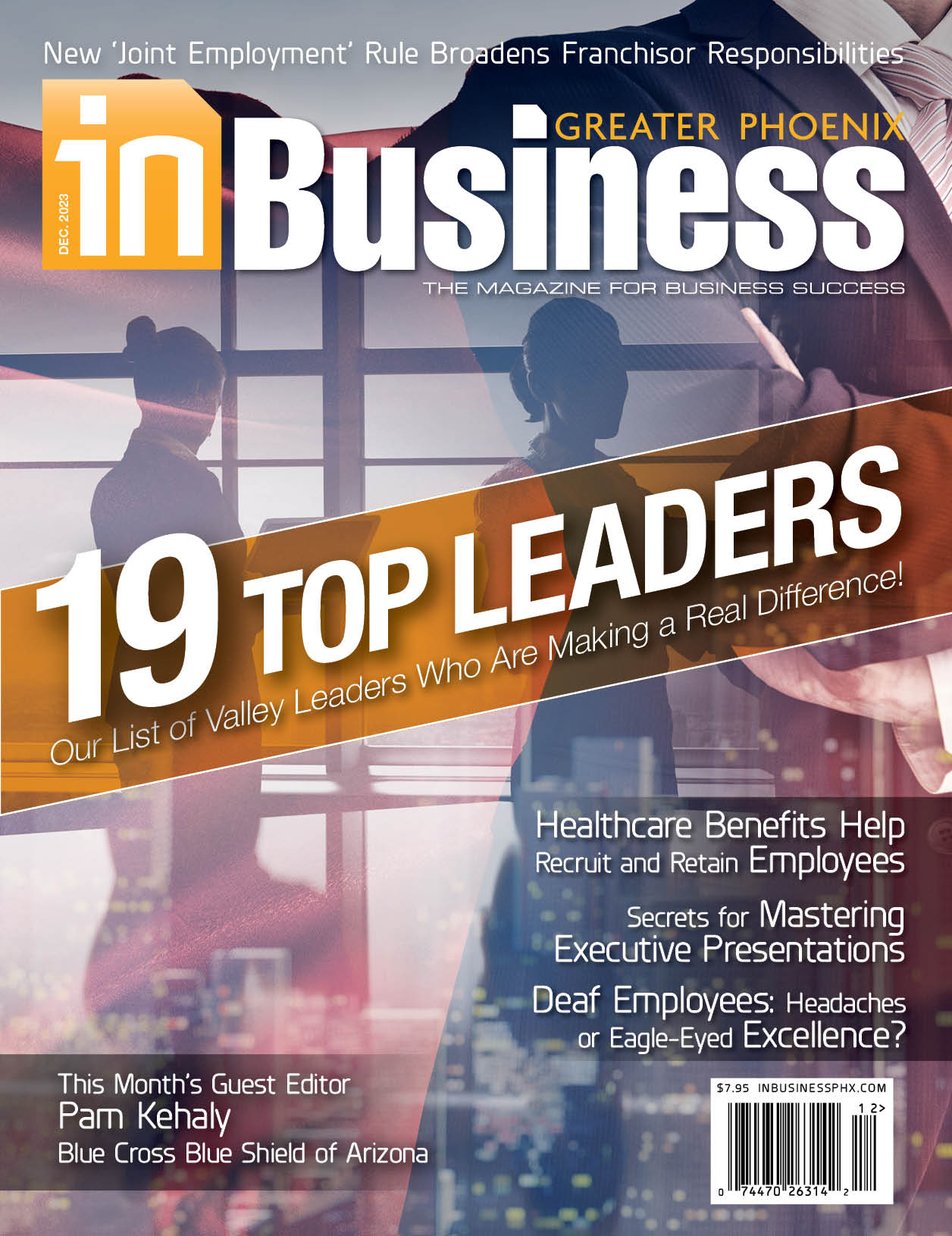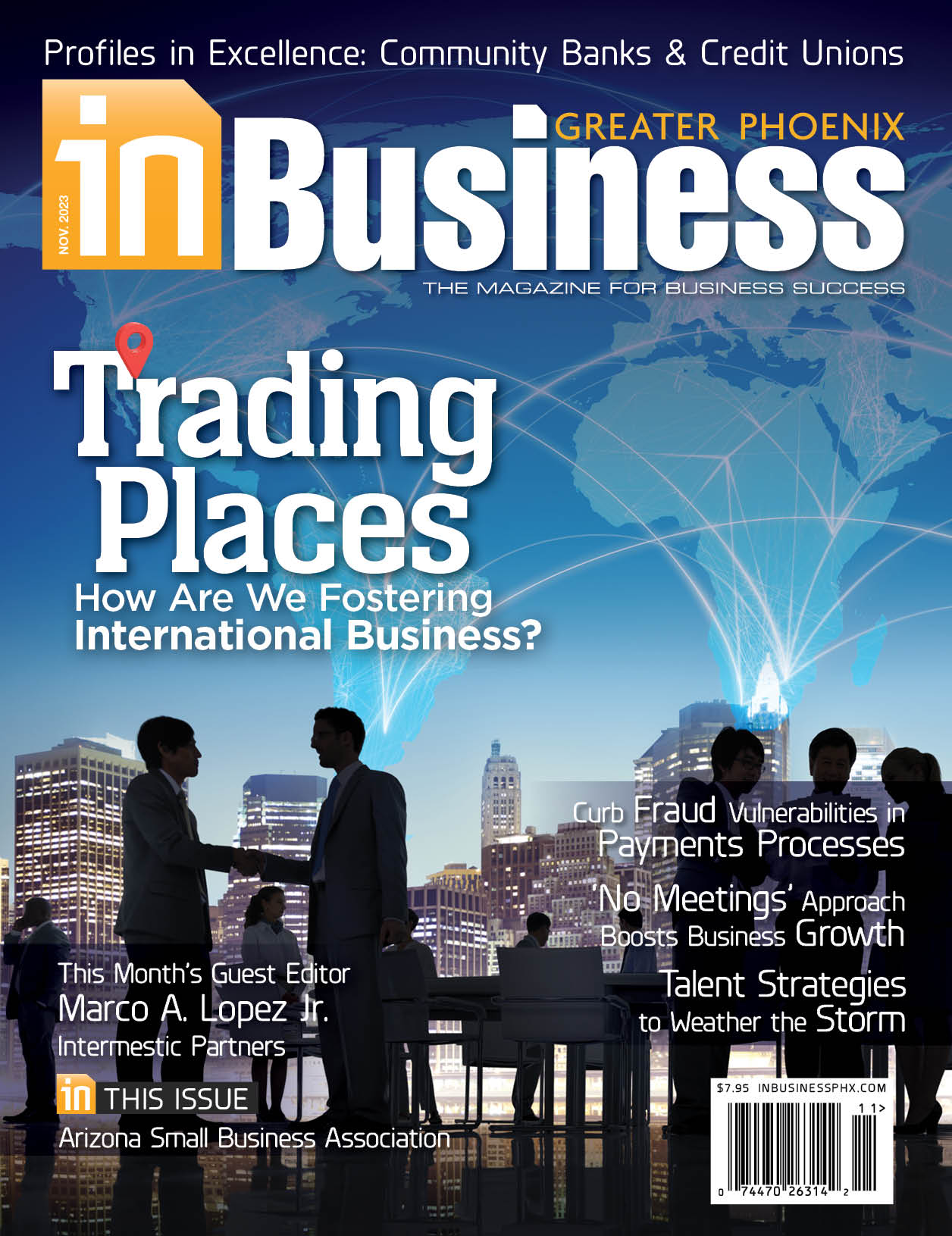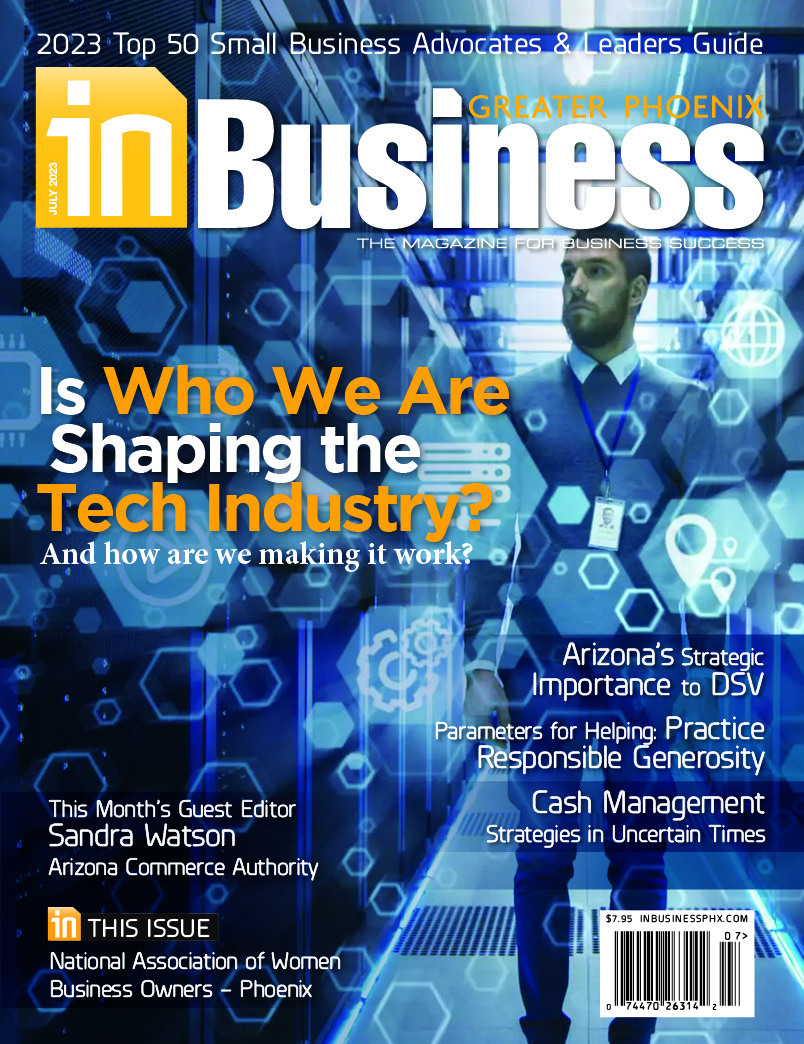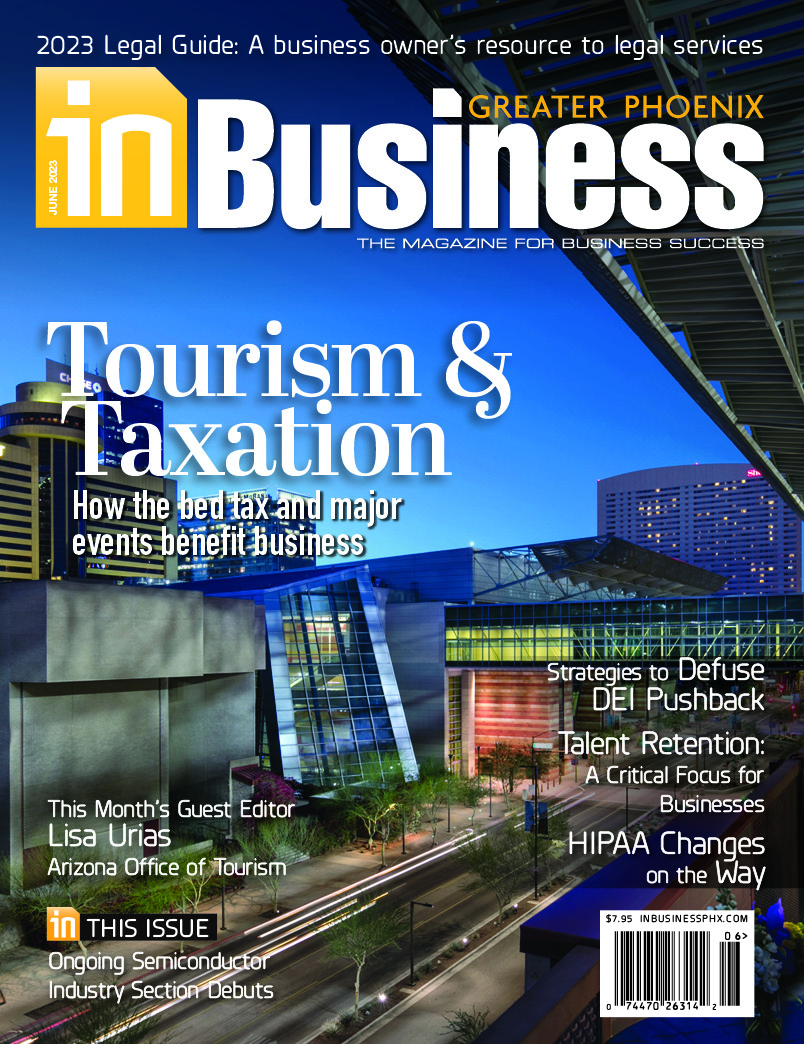
The observation of Jennings, Strouss & Salmon attorney Otto Shill, “The primary concern of business owners today is to keep their respective businesses viable,” can hardly be disputed. Most business owners are adapting to current market circumstances that may be limiting or altering the way they interact with their customers. In addition, many businesses are facing significant cash flow concerns, and government assistance continues to be vital. The second round of stimulus gives many businesses additional aid to assist with their survival. “However,” Shill adds, “businesses need to stay abreast of regulatory and enforcement changes, many of which come in lists of ‘Frequently Asked Questions’ rather than through the normal rulemaking process. We have seen these regulations evolve from announcement to announcement, which makes consistent compliance more difficult, and exposes employers to uncertainty and risk as they seek to take advantage of government benefits.”
Points out Radix Law founder and principal Jonathan Frutkin, “The biggest issue is that we will have more and changing mandates that are difficult to implement. As you can imagine, during the initial push to require public masking, this put tremendous pressure on businesses and their employees to essentially police private behavior.” Additional necessary public health measures, including the closure of public schools, require adjustments from business owners.
Labor and Employment
Jaburg Wilk attorney Alejandro Pérez turned his voice against the coronavirus itself when asked about its business impact: “You have had a major impact on almost every facet of doing business. Speaking to the workforce, you have turned the employment relationship on its head. Within days and weeks, employers had to scramble to meet the demands of various closure orders and ensure the safety of their employees by moving large swaths and, in many cases, their entire workforces outside of the workplace and into the virtual remote working world.”
Pérez notes the switch to remote work had brought serious issues with wage and hour laws, data privacy, leave laws, and just about every other employment law in existence — putting employers (and, he sardonically admits, employment attorneys like himself) — in the situation of struggling to stay afloat in a flurry of guidance and opinions issued by various government agencies. Small businesses not used to having to deal with the Family Medical Leave Act were, under the Families First Coronavirus Response Act, forced to learn quickly and provide leave previously not required of them. “Speaking of the FFRCA, even larger employers found themselves scratching their heads as to how to provide various sorts of leave under various situations.”
The surge of COVID-19 cases is impacting businesses on multiple fronts, notes Eric B. Johnson, chair of Quarles & Brady‘s Labor & Employment practice. From an employment perspective, an increasing number of employees are taking leave while they battle COVID-19, while other employees are being quarantined due to COVID-19 exposure. Many of these employees may be unable to work remotely. “Accordingly, employers should implement contingency plans if a significant number and/or key portion of its workforce becomes unavailable as the pandemic continues,” he says, observing that, while vaccinations offer hope for the future, stability in the labor market is, at a minimum, many months away.
It should be noted that much of the initial change was implemented more spur-of-the-moment than the result of extensive study and planning. Says Pérez, “Employers had to, essentially, rush their employees out of the door. Many of these employers lacked the proper infrastructure and IT resources to support large-scale remote work.” In terms of labor, important questions are: How do they measure productivity? How do they prevent easily controllable wage and hour issues in the remote setting? How do they protect their trade secrets and intellectual property? How do they properly measure performance and provide timely and meaningful feedback? “These concerns — and many others — keep my clients, and myself, up at night. And rightfully so; we are a society that doesn’t like to ‘reinvent the wheel.’ In many respects, we are taught to look to the past to inform our futures and, generally, respect the idea of stare decisis. We don’t have history to draw from here.”
“The reality of a remote workforce is likely here to stay for many businesses,” says Joshua Black, managing attorney at Law Office of Joshua Black. “Many companies that had only existed in a brick-and-mortar office prior to the pandemic have made the transition to a remote workforce during 2020. While initially chaotic for employers to set up — what wasn’t chaotic at the beginning of the pandemic? — the benefits from the remote-work arrangement have been numerous.” He believes many employers will likely continue to utilize some sort of a hybrid model for allowing employees to work remotely at least part of the time moving forward if the particular position accommodates it. “It is worth noting, however, that an employer still has liability for employees who are working from home should those employees get injured while carrying out their work duties at the home office.” He suggests employers check with their workers’ compensation insurance providers to get a complete understanding of how employer liability will work if an employee sustains an injury while working at home.
Pérez believes employers have little choice. “Adapting to changes while remaining flexible has been the new normal for employers. The remote workforce, as I pointed out, is fraught with issues. It is harder to develop, oversee and protect your privacy in a remote work setting.” He anticipates growing pains dealing with a remote workforce. In the alternative situation, for employers still operating brick and mortar with an onsite workforce, safety will be a major issue. Maneuvering safety issues and encouraging vaccines with employees who may refuse the vaccine will likely pose challenges. “Keeping employees, customers and vendors safe is a serious concern that is difficult to navigate,” he says.
This is where written policies can bring some order, Black advises employers to make sure their policies and handbooks have been updated to include recent changes in the law relating to COVID-19. “Many employers may now need to add language to their policies regarding topics such as COVID protocols, remote workers, employees accessing company documents and files on personal devices, internet use policies, et cetera,” says Black.
“Businesses across all industries have faced some particularly large hurdles this year in the area of labor relations,” Black continues, citing their attempt to grapple with lockdowns and stay-at-home orders that have resulted from the COVID-19 pandemic as the largest among them. “Not only have employers faced major issues with implementing remote work arrangements for their employees who can’t come into the workplace, they have also faced the challenges associated with maintaining a healthy workforce and taking steps to ensure that the workplace itself does not become the epicenter of a COVID-19 outbreak,” he says.
Healthcare
And even as we see a potential solution to the pandemic, employers face a new dilemma: When COVID-19 vaccinations become available for the general public, should employers make vaccinations mandatory for all employees? “If so,” says Eric B. Johnson, chair of Quarles & Brady’s Labor & Employment practice, “employers will have to grapple with potential exemptions for certain employees due to things such as an employee’s medical condition or religious beliefs.”
The Equal Employment Opportunity Commission has already issued guidance that employers should consult when implementing a mandatory vaccination policy. Black notes that, additionally, employers who intend to implement such a mandate will need to update their employee handbooks and policies, then adds, “These employers, of course, will also need to implement an accommodation process for certain employees who may have legally protected rights to refuse such a vaccine based on their own serious health condition or sincerely held religious belief.”
As Pérez explains, employers are facing an unknown future. “At the onset of all this was the thought that one day things would ‘go back to normal.’ I think we now realize that is not the case. The shift, and major concern, has now shifted beyond surviving to adapting to a new workforce.” The above-mentioned issues around mandating vaccination for employees raises further questions about how to ensure the safety of their workforce. “These are difficult questions that require acute analysis.” And Pérez adds a new one: “On the topic of safety, how does an employer avoid liability for the spread of COVID?”
Fennemore Craig’s Heather Macre, whose work focuses on business litigation, healthcare and bankruptcy, enumerates some of the many changes afoot on the healthcare level:
On Nov 20, 2020, CMS announced the final Sprint Regulations, which represent sweeping changes to the Stark Law. The Stark Law prohibits physician self-referrals, but its requirements have largely shaped physician compensation and how healthcare is billed and managed. “The new regulations reflect a move to value-based care, which prizes preventive care and quality assurance measures,” Macre explains. She expects this to impact healthcare delivery and pricing.
In addition, COVID has stressed the system and left many wondering, “What’s next?” Noting the vaccine rollout will be one of the largest public health initiatives ever, Macre says, “It will be interesting to see how it works and the public’s reaction to the vaccine.”
Another change comes from the EEOC’s position that employers may require COVID testing, especially for front-line workers, as long as accommodations are made for disability and religious belief. The same is largely true concerning the vaccine. “This raises some privacy concerns that employers may not have dealt with in the past,” Macre cautions. “The ADA requires that employers keep health data private, so all this information should be stored in a secure file that is kept separately from other employment files.”
Macre believes that, in a changing environment, flexibility and communication are key. “We know that there will be questions about the COVID vaccine and whether or not it should be required or encouraged by employers.” With changes being inevitable on the federal, state and local level as the vaccine rolls out, she says, ”Businesses should come up with a ‘pandemic plan’ as well as a ‘vaccination plan,’ and appoint a point person to monitor changes.”
While healthcare costs continue to trend ever higher and these costs being passed on to employers, Macre points out that telehealth also continues to be a trend.
According to Macre’s Fennemore Craig colleague Courtney Beller, vice-chair of the firm’s business litigation practice group, many states are considering, or likely will consider, reimplementing restrictions concerning the number of people who can be present at events and/or in businesses, as well as closing certain categories of businesses altogether (such as movie theaters and indoor dining). “Any additional limitations will undoubtedly significantly impact revenue,” she says, noting healthcare providers are certainly among those businesses feeling that squeeze. “Healthcare providers, although very busy triaging COVID-19-related claims, are also taking steps to cancel or reschedule elective surgeries, which make up a sizeable amount of hospital and healthcare provider revenue.”
Not all healthcare costs are directly related to COVID-19. Coppersmith Brockelman’s Karen Owens points out, “As hospitals fill up with COVID-19 patients, increasing numbers of patients who need the hospital for other services will either postpone their visits or find their access limited. Businesses will have to cope with the personnel fallout of these postponements: for example, personnel needing orthopedic surgery, which often is classified as ‘elective,’ may need to stay out of work for longer periods prior to surgery.” Owens, a member of the firm’s nationally recognized healthcare practice, adds that this trend may be exaggerated by hospitals losing healthcare providers who burn out after months of stress generated by the COVID pandemic. “Even with the prospect of vaccinations,” Owens says, “this pandemic is by no means over, and businesses should expect its impacts for months to come.”
Real Estate
Among all the other issues the pandemic has required giving a new look at or at least careful consideration of, real estate is going to be top of mind for everyone, Fennemore Craig’s Beller believes. “As ongoing infection concerns continue, many workers will continue to work from home and businesses will be subjected to reimplemented occupancy mandates,” she explains. “Employers and business owners will be looking at whether they can renegotiate lease agreements to shrink their physical footprint.” She expects that, with numerous leases coming up for renewal in 2021 and 2022, the same businesses will be looking at whether and to what extent they can negotiate better lease terms in light of these changes.
In regard to this, questions about having a remote or hybrid workforce must also be considered. Employers will be weighing concerns about keeping employees safe, with employee preferences to potentially continue working from home in the long term. Says Beller, “We are already seeing this with a shift of big city workers moving to less costly locations while keeping their existing jobs.
“Many employers are going to be looking to talent pools outside of the coasts, given that workers can and will likely continue to work remotely due to rising COVID-19 numbers,” Beller continues, noting that the patchwork of COVID compliance rules and regulations across states and municipalities will make it hard for multi-city and -state businesses to operate, at least in the near-term. This, Beller predicts, will further support a work-from-home policy — because it will be easier to comply with COVID-19 regulations if no one is physically in the workplace. This is where real estate concerns overlap other employer concerns, since, along with decisions about a workplace, businesses will need to consider what constraints need to be put in place to allow workers to transition to or keep working from home (i.e., confidential information, HIPAA, etc.).
Beller suggests businesses look closely at their leases to see what changes, if any, can be made that will help the bottom line. Further, she says, “Based on ongoing and forthcoming occupancy and business restrictions, owners and employers may also be seeking to transition to other industries (i.e., transitioning retail scape to industrial) — they will need to consider whether and to what extent their leases or loan documents allow them to make that change.” Beller raises a concern that businesses may make changes without considering whether or not they are permitted to do so.
Has COVID-19 raised the liability exposure for property owners and users? Not really, says Snell & Wilmer partner Byron Sarhangian, who co-chairs the firm’s Real Estate Practice Group and Opportunity Zone Industry Group. “Users and owners have been pretty quick to develop the ground rules. Owners are requiring potential users to take safety precautions when inspecting real estate and have typically added language to existing indemnification clauses to protect themselves.” However, he adds that, up to now, “we haven’t seen major shifts from a documentation or practical business conduct perspective.”
Specific concerns differ based on the particular type of real estate.
The industrial and multifamily markets continue to be very strong in Arizona, Sarhangian says. “We’ve seen a number of retail and office developers start to enter the multifamily and industrial spaces. This is pretty uncommon in a typical development cycle, so it will be interesting to see how successful developers are at switching product type/specialization.”
Sarhangian believes industrial is likely to be the strongest sector going forward, with medical manufacturing returning to the United States and warehouse uses increasing due to the demand for online shopping. “However,” he says, “in the retail and hospitality markets there are serious concerns. With respect to non-grocery-anchored retail properties, there are questions about the viability of existing projects.” Many retail shoppers have moved almost exclusively to online shopping, which makes for an uncertain future of brick-and-mortar retail real estate, he explains, noting he has seen a number of retail developers start to pivot toward industrial development.
For properties in the hospitality sector, Sarhangian observes that some recreational travel seems to have returned but business travel has still been very slow. “It seems like there is optimism in the market that some business travel will start to return after a vaccine, but many think convention travel will be limited for a few years to come,” he says.
The office markets are still uncertain. As discussed above, many office users are still trying to get a better understanding of what office life looks like post-COVID and are, therefore, hesitant to enter into long-term leases.
Real estate may be buffeted by a new force other than COVID. Sarhangian points out, “Prop 208 has the potential to slow down business migration to Arizona. Arizona had positioned itself very well nationally to recruit companies exiting high tax states like California. If business migration slows in Arizona it has the potential to impact all real estate classes.
Tax Law and Finance
Now that a new round of stimulus benefits has been passed, Shill — whose focus at Jennings, Strouss & Salmon includes tax and estate planning, business transactions and regulatory compliance — cautions businesses to be current on which benefits are expiring, which continue, and which are still available.
“The good news,” says Frutkin, “is that the December stimulus bill eliminated the need to pay taxes on the PPP funds given by the government and allowed businesses to deduct the PPP expenses.” He notes, further, that additional loans are now available under the PPP Round 2 program, plus additional grants and other opportunities for certain businesses, including operators of theater and musical venues that have been, essentially, shut down for almost a year.
However, Shill cautions that sometimes, there is uncertainty has to how the benefits continue. “For example, it appears that employers may be able to voluntarily continue paid leave benefits enacted by the Families First Coronavirus Response Act and receive related tax credits through March 31, 2021. However, current guidance is minimal about how employers can implement the statute, which contains references to hypothetical applications of now-expired provisions of the FFCRA.”
An additional issue Shill points to is, it appears there is a perception that many businesses that received PPP loans under the first stimulus package may have satisfied technical requirements but may be perceived as not being the intended recipients. “Whether or not true, we believe that the government will begin to review loans in connection with forgiveness applications, and we expect an increasing focus on enforcement. Borrowers should seek appropriate guidance from attorneys, accountants and bankers concerning the requirements for loans and loan forgiveness, as well as the implication of the representations they make on application documents, as issues that arise with these transactions and documents can be the basis for liability under several federal statutes, including, but not limited to, the federal False Claims Act.”
Looking a little further ahead, Shill says, “It is important for all businesses to know that eventually, the government is likely to require funding to restore COVID-19 related expenditures to the federal fisc. Thus, it is likely that we will see tax increases in the future to pay for the benefits currently offered.” He suggests businesses and their advisors start planning for the future operational and financial conditions — including the potential of future increases in income tax rates, unemployment tax rates, etc. — as soon as possible.
This cautionary view is also expressed by Frutkin, who notes the biggest concern is the unknown. Regarding COVID, he says, “A host of government programs helped. But now, with a change in administration, there is always fear that tax increases and regulatory changes will appear over the next year or two.”
Shill believes employers have a responsibility to also consider the impact of the current situation on employees. Many of the provisions of the CARES Act and the new stimulus legislation focus on allowing employees to withdraw early benefits from retirement plans, which means, Shill notes, the employee base as a whole may have less of a “nest egg” than before the pandemic. “Businesses will need to consider the possible impact of having employees delay retirement and working with less financial security than before,” he says.
Intellectual Property
And then we come to the realm of intellectual property, where one might naturally have expected the tremendous activity that has, in fact, occurred.
“There is a surge of products and services on the market to help track, monitor and manage levels of risk related to COVID and other contagion exposure, most of which surround the collection of certain data points. The result is a proliferation of data that businesses would not have otherwise had – geolocation data, temperature data, et cetera,” says Heather Buchta, a partner at Quarles & Brady who chairs the Intellectual Property Group in the Phoenix office and is a member of the firm’s Data Privacy and Security industry team. This increases pressure on businesses to deal with licenses and contracts for the acquisition of these products and services, along with the business and legal risk that comes with such tools, such as risk of IP infringement, and the collection and use of the data itself, which increases data privacy and security risk.
“We are likely to continue to see a rise in data privacy and security laws and regulations around the country,” Buchta says, observing that state legislatures had already been concerned about data privacy and security, and that was likely to be heightened as more consumer data is being collected — especially around sensitive information such as infection status, vaccination status and geolocation for contact tracing. “The form that regulation may take, whether through general privacy legislation such as California’s or more target legislation like Illinois’ BIPA, remains to be seen,” she says.
The pandemic hasn’t changed the fact that businesses are concerned with protecting trade secrets, confidential information and other sensitive intellectual property from individuals or groups involved in corporate espionage, hackers and other threat actors. But Daniel R. Pote, of Jennings, Strouss & Salmon, believes this challenge has been exacerbated by COVID-19. “Information security experts emphasize the need to reduce the overall ‘attack surface’ of a business — meaning the sum of all points where an unauthorized user may exploit a vulnerability in the business’s network.” Observing that, in this remote work age, the attack surface necessarily increases in size due to the increased use of home computers that exist outside the company network as well as the use of remote desktop software and collaboration tools such as Zoom, Skype and Google Meet, Pote notes, “This has led to a dramatic increase in attacks, particularly COVID-19-related phishing attempts targeting work-from-home users.”
These changes mean that data security is going to continue to be a paramount issue in 2021, cautions Buchta. In fact, the more data a company has and maintains, the more vulnerable it is to data incidents — exploitations of vulnerabilities that lead to unauthorized exfiltration, acquisition, modification, use, et cetera of that consumer data. “One thing that businesses in particular should be sensitive to,” says Buchta, “is to carefully balance the risk of some of these new tools mentioned above with the data security risk presented by these tools. You may not want the goal of ‘perfect’ security to stand in the way of employee or customer health that can be boosted with these tools, but you also don’t want to forego all security analysis in the rush to get some of these new tools in place.”
Paraphrasing the Realtors’ mantra, Buchta says that to deal with the changes, businesses should “Prepare, prepare, prepare.” Specifically, she cautions, “Know your vendors and know where your data is going. As regulation increases, the more you have a strong data privacy and security roadmap from which to build, the better off you will be.”
Another broad area of IP concerns is protecting patentable subject matter, trademarks and copyrightable works through appropriate United States Patent and Trademark Office (USPTO) procedures, some of which have changed during the COVID-19 pandemic.
Pote points out that, with respect to innovation incentives, the USPTO has introduced a number of pilot programs aimed at allowing applicants to contribute to the fight against COVID-19 while also protecting their patent rights. “In general, these programs are aimed at products or processes that, if implemented, would be subject to FDA approval for use in the prevention and/or treatment of COVID-19,” he explains, “though it is not necessary for the applicant to apply for such approval prior to applying for these programs.
“Most notably,” he continues, “the COVID-19 Prioritized Examination Pilot Program shortens the timeline to acquire patent protection of COVID-19-related inventions for small businesses and independent inventors.” In essence, this program allows a patent applicant to request prioritized examination without requiring payment of a standard fee ($2,100 – $4,200), with aim of a final disposition of the patent application within a year. “This pilot program will last until 500 requests are granted, and at the time of this writing [in early January], 444 applications have been filed and only 266 have been granted.”
Similarly, under the deferred-fee provisional patent application pilot program, patent applicants may defer payment of provisional application filing fees until the filing of a corresponding, non-provisional application. In such cases, Pote explains, the applicant must agree that the subject matter in the application will be available on the USPTO website. “Note, however, that the USPTO fees for filing a provisional patent application are already quite low (approximately $150-$300), so the value of this program remains to be seen,” Pote says.
Two other USPTO programs Pote mentions are a Patent Pro Bono Program for independent inventors and small businesses, and a “Patents 4 Partnerships” initiative that brings together those who have technologies and want to make them available for licensing and those who have an interest in commercializing those technologies. Plus, he says, “The USPTO has also instituted a COVID-19 prioritization program for certain trademark applications, and is accepting petitions to advance examination of applications for marks used to identify qualifying COVID-19-related trademark applications that describe certain medical products and services.” More information about these and related USPTO programs can be found at the USPTO COVID-19 Response Resource Center.
Bankruptcy and Restructuring
From an exclusively economic perspective, Peter Riggs and Kris Dekker, whose focus at Spencer Fane is the firm’s financial services practice, believe the most significant story of 2020 was the degree to which federal stimulus was able to significantly mitigate the impact the pandemic had on the economy. “Once it became clear that COVID-19 was spreading rapidly in the United States and restrictions on person-to-person contact would be required, analysts predicted waves of commercial bankruptcies across numerous industries,” they relate. “Ultimately, however, while it was an active year for commercial bankruptcies, the volume of filings was substantially less than predicted, predominately because of government stimulus, in the form of PPP and other loans, stimulus payments, and expanded unemployment benefits that helped maintain consumer spending and prevent even greater job losses.”
Before Spencer Fane’s Riggs and Dekker and Lewis Roca Rothgerber Christie’s Rob Charles help us delve into the topic of bankruptcies and business restructuring, it will be helpful to look at the general economic picture to it context.
Noting that the impact of the pandemic across different sectors of the economy was by no means uniform, Riggs and Dekker offer the following industry snapshots:
Physical Retail: Since the emergence of online retail, physical retail (retail operating in physical locations rather than online) has been in decline, and the pandemic has accelerated that decline. In 2020, the pandemic-related restrictions caused physical retail to experience a significant drop in foot traffic. Compounding the problem for physical retail is that the restrictions, in many cases, pushed consumers to find online alternatives, which could very well impact consumer behavior beyond the pandemic. Notable retailers that sought bankruptcy protection in 2020 include JC Penny Co. Inc., Neiman Marcus Group Inc., Lord & Taylor, Guitar Center, Tailored Brands (including retail brands Men’s Wearhouse and Jos. A. Bank), Ascena Retail (including retail brands Ann Taylor and Loft), GNC, J. Crew, Brooks Brothers, Stein Mart, Pier 1 Imports, Century 21 Department Stores LLC, True Religion and Sur La Table.
The decline in physical retail has also impacted commercial real estate. Struggling retailers became unable to pay rent, which impacted income and property values for commercial property owners. Two major mall owners filed for bankruptcy protection this past year: CBL Properties and PREIT.
Other Businesses Dependent upon Physical Presence: Some otherwise strong businesses suddenly found themselves in crisis as a result of a sudden shift in consumer behavior, most notably those businesses that depend on the consumer’s physical presence. Several such companies sought bankruptcy protection in the fitness center space (Yoga Works; Cyc Holdings, owner of Cyc Fitness; Gold’s Gym International; and 24 Hour Fitness Worldwide, Inc.; among others), the restaurant industry (California Pizza Kitchen; FoodFirst Global Restaurants, owner of Brio; Garden Fresh Restaurants, owner of Souplantation and Sweet Tomatoes; and CEC Entertainment, parent company of Chuck E. Cheese; among others), and movie theater chains (Studio Movie Grill Holdings and Cinemex USA Real Estate).
The travel industry also suffered significantly from the restrictions and health concerns arising from the pandemic. While the airlines were beneficiaries of a $25-billion government bailout, other travel-related businesses such as hotels, rental cars and ride hailing services were not as fortunate. Rental car company Hertz is the most prominent example that wound up in bankruptcy in 2020. Other downstream vendors such as VRBO and AirBNB owners also saw significantly reduced revenues on account of declines in travel overall and customer weariness associated with booking non-standardized rental units during a pandemic.
Energy: The sharp decline in personal and business travel and daily office commutes, combined with price wars in global markets, has sent oil and gas prices to historic lows and accelerated a multi-year decline for oil and gas companies in 2020. According to a recent analysis by Haynes and Boone LLP, 45 oil and gas drillers filed for bankruptcy during the first 11 months of 2020, citing some $54 billion in debts. Similarly, in the oil field service industry, 57 companies filed for bankruptcy protection during the same period, citing $41 billion in debts.
Bright Spots: Of course, not all segments of the economy suffered. The effects of COVID-19 have accelerated the prospects of online retailers such as Amazon, connectivity services such as Zoom, home improvement stores such as Lowes and Home Depot, home fitness equipment manufacturers such as Peloton, entertainment services such as Netflix and video game platforms, and big-box retail such as Walmart and Target. These businesses boomed in large measure due to changes in consumer behavior resulting from pandemic-related restrictions and concerns.
Observing that some businesses and employees are weathering the downturn our economy has suffered across the board and some are actually thriving, Rob Charles, leader in the Lewis Roca Rothgerber Christie’s Bankruptcy and Creditors’ Rights team, says, “Most are not,” and adds, “Perhaps surprisingly, bankruptcy lawyers are not.” One reason for that, he offers: Folks in financial distress know this is not the bottom.
“America and Americans have weathered business cycles, booms and busts, for centuries,” Charles notes. He points out that legislatures and Congress have provided tools over time to help with the reality of economic loss. Private parties have been able to modify their agreements, such as reducing price to move inventory, extending loan terms to avoid default and foreclosure, and even take a personal or business bankruptcy. “As a practicing bankruptcy and restructuring attorney since the mid-1980s, I have advised clients through numerous economic downturns implementing these tools for clients,” Charles says. “Most businesses that experienced the great recession of 2008 and have been navigating the economy before and after the recession and then recovered know they have options.”
Essentially, bankruptcy means choosing either restructuring and reorganization or liquidation and sale. “An individual or business that seeks to reorganize must be able to make intelligent projections of its income and expense for a reasonable period of time, to know what is left that can be used to pay for debt and ownership,” Charles explains. The quandary for businesses: “In a world, country, state, city or neighborhood when you don’t know when business can be conducted, in what manner, and what additional expense virus protection will impose, how can you invest legal expense in reorganization? And how can individuals know that they should use a bankruptcy filing to obtain a discharge of debt now when the discharge can be obtained generally only once every eight years?”
With regard to reorganizations — which entails obtaining some form of debt relief but allows the business operation to continue rather than wind down — Riggs and Dekker note that Congress enacted the Small Business Reorganization Act of 2019, creating a faster and more efficient reorganization option for small business debtors. “Originally, this option was available only to businesses with debt not exceeding $2,725,625, but in reaction to the economic fallout from the COVID pandemic, Congress expanded this option, making it temporarily available through March 27, 2021 to businesses with debts up to $7,500,000.,” they explain. “For small businesses in need of debt relief, reorganization under the Small Business Reorganization Act is a far more viable option from a cost and efficiency standpoint than the standard Chapter 11 bankruptcy, which was previously the only option available for reorganization. The goal of this new reorganization option is to allow more small businesses an opportunity to remain in operation.”
Riggs and Dekker caution business owners who are considering reorganization as a means to maintain their business operations but who have granted personal guaranties with respect to their business’s debts to first confirm whether the business’s bankruptcy triggers additional liability under their personal guaranties before they undertake any action for reorganization.
Outside of bankruptcy, lenders and borrowers face the same challenges due to uncertainty, Charles points out. The dilemma: When will rent or other business income result, so borrowers can repay debt? If no one can operate, how does foreclosing one borrower help the lender find the next borrower? If unemployment is high, incomes are down and governmental assistance is sporadic at best, how can landlords make decisions about working with or evicting tenants?
With respect to commercial loans, Riggs and Dekker note that many lenders adopted a “wait and see” approach during 2020, with most being willing to grant deferral and forbearance agreements to their borrowers. Reflecting that the patience of lenders may wane as non-performing loans create a drag on portfolio performance, they anticipate a moderate uptick in loan enforcement this year.
Getting back to point about there having been fewer bankruptcies than economists had predicted, Riggs and Dekker observe that “the unprecedented economic stimulus injected by the government in 2020 appears not only to have staved off any increase in commercial bankruptcies, but perhaps actually decreased them, at least for the time being, relative to historical levels.” They cite data from the American Bankruptcy Institute to support this view: Through November of last year, 30,310 commercial bankruptcies were filed in the U.S. Assuming a uniform monthly pace of filings, that would result in approximately 33,065 filings for 2020. By comparison, in 2017, 2018 and 2019, there were 39,050, 38,044 and 38,536 commercial bankruptcies filed, respectively. The year 2020 did see an increase in Chapter 11 filings, with the largest number of commercial cases filed (6,735 through November 2020) since 2012 (7,289 Chapter 11 cases).
The grey lining on that rosy picture, however, is the likelihood that many companies have merely survived the pandemic thus far and have depleted their cash reserves and other capital to do so. “Once that capital is spent and government stimulus tapers off, these companies may need to consider bankruptcy,” Riggs says.
Another sobering thought is, there also are businesses that may not absorb the full impact of the pandemic for several years yet, Riggs and Dekker point out. For instance, if companies ultimately find work-from-home arrangements to be economical, effective and popular on a long-term basis to a degree that allows them to reduce their office footprints, the office landlords may not feel the impact of that reduced demand until the leases begin to expire. And some businesses may never return to their pre-COVID revenues because their customers’ preferences may have changed during the pandemic, such as consumers who acquired a new-found preference for online, delivery and curbside services. “All of which could lead to additional bankruptcies long after the COVID virus has been contained,” Dekker says.
“Every business owner must critically examine not just the bank account, but also the business model,” says Charles. Consider these distinctions, for example: Drive-through quick convenience stores are winning; fine sit-down dining is being devastated. Mass gathering entertainment venues are failing; drive in entertainment and digital streaming are winning. Most specialty retail is struggling; mass consumer grocers and on-line delivery models are surviving. Suggesting that business owners embrace the changes that are coming and abandon practices that no longer sell or are profitable, Charles says, “Close if you can’t change, and use your capital on something that will work for you. Look for profitable, sustainable trends and let go of business practices that either only lose money or cost as much as they bring in.”
“While uncertainty remains about how quickly COVID restrictions can be eased and how soon thereafter the economy will recover, we have at least some clarity about what to expect with regard to that timeline,” Dekker says. He and Riggs believe this greater clarity will help businesses plan and provide banks greater comfort in extending bridge financing, maturity extensions and forbearances to their customers — thus enabling those customers to get through the remainder of the pandemic.
There is another aspect to consider. Noting that some economists still believe there may be a surge in commercial bankruptcies at some point this year as government stimulus tapers off, Riggs and Dekker refer to a paper published by the Brookings Institute last September, “Sizing up corporate restructuring in the COVID crisis,” to caution, “While additional government stimulus is still planned, some think it may be ultimately insufficient to keep many businesses from filing for bankruptcy, raising a concern about whether there will be sufficient judicial bankruptcy resources and debtor-in-possession financing for small businesses. In the event a bankruptcy surge of significant magnitude begins to emerge, the government may address these concerns, but additional legislative reform is unlikely at the present time.”
Contracts and Business Transactions
Stephanie A. Fierro, a partner at Jaburg Wilk whose practice focuses primarily in the fields of estate planning, probate and business law, concedes this is a difficult time to plan. “Successful contracts and business transactions are usually based on a certain amount of predictability.” This helps reduce the risk that is inherent in entering into a new agreement. But right now, she says, the only thing predictable is that nothing is predictable. “Even the most well-established businesses have had to pivot, and their tried-and-true business models went out the window. Consequently, business owners are not as comfortable entering into long-term contracts. And business owners who were perfectly positioned to sell early last year saw the bottom fall out from under them as the lack of predictability tanked the value of their businesses.
“Nevertheless, all hope is not lost. There are still things business owners can do,” Fierro says.
For example, now may be a good time to renegotiate existing agreements. As the saying goes, it doesn’t hurt to ask — usually. But she cautions, “Be careful not to alarm the other party or disclose information that may be harmful.” For this reason, it may be worthwhile to consult with an attorney before attempting any renegotiation.
Regarding new agreements, Fierro suggests businesses consider adding a pandemic clause to limit the uncertainty about what the obligations will be if a pandemic interferes with business operations going forward. “While contracts often include a force majeure provision (to excuse performance under certain circumstances), the particular force majeure language may not go far enough,” Fierro explains. “The idea is to go beyond a boilerplate force majeure provision and specifically address a pandemic-level event, such as COVID-19 and related government regulations.”
Arizona health officials recently altered the state’s business closure benchmarks with new ones that all but eliminate the risk of future shutdowns, but Fierro cautions the change does not mean there are no regulations or that a closure cannot occur. Businesses must still follow all required regulations, such as limiting capacity. And she notes, “A member of the public may report a business for failure to comply with applicable regulations. If reported, businesses face investigation and enforcement action by local law enforcement and regulatory agencies.
“Businesses must appreciate that public perception will also play a role in recovery,” Fierro continues, noting that, in order for people to feel comfortable going out in public again, the public needs to see that businesses are making an effort to keep them safe, by following occupancy limitations and cleaning protocols among other things.
Says Fierro, “The most important thing a business owner can do right now is stay informed in order to protect their business.” Business owners should regularly visit appropriate state and county websites to review current guidance and requirements. And, if a business owner needs assistance understanding their obligations, he or she should consider hiring an attorney to help them sort through it all.
Flexibility is a key element for businesses in these times, and, says Fierro, “they need to build flexibility into their agreements with third parties.” She shares, “During this pandemic, we’ve seen many businesses struggle while others thrive. This is based in large part on industry-specific factors, but adaptability has been a factor as well.” Compliance with COVID-19 guidelines and regulations have strained budgets and disrupted formerly normal business practices, and disruptions at one level of the supply chain can adversely impact businesses up and down the chain, as we saw with meat shortages in 2020. “Consequently, business owners need to look at whether their supply chain is diversified,” Fierro points out, explaining, “If not, their vendor’s inability to fulfill its obligations may severely impact their business.” She suggests business owners address the issue by carefully considering any exclusivity provisions in their agreements that may impact their ability to source things from other vendors, and also put redundancies in place so they can continue to provide goods and services if one party in the supply chain falters or fails.
“While this may seem like a bad time to start a new business, it depends on your perspective,” asserts Fierro, pointing out that, while successfully running a business during a pandemic is uncharted territory, it is not all gloom and doom, as new problems force creative solutions. “Now may be the perfect time for your product or service to enter the market. If so, start off on the right foot by forming an entity; fulfilling any applicable licensing requirements; and having contracts with third parties properly drafted, reviewed, and negotiated. People often prefer to expect to succeed and dismiss the risks, but planning for the worst can increase your likelihood of success.”
Because it remains impossible to plan for the unknown, Fierro suggests businesses budget for continued restrictions and legal counsel that can help business owners and employers identify issues before they become problems. “Failure to comply with government regulations, during the pandemic or otherwise, can be an expensive misstep — especially when the failure to comply was inadvertent,” she notes.
Moving Forward
“It’s impossible to know everything there is to know. Realize that and surround yourselves with support. Employers should partner with employment counsel, consultants, appoint task forces and create positions as necessary to deal with the constant changes and to maneuver the sea of challenges so they can stay afloat. If anything is certain it’s that nothing is certain. At least not today. Stay focused, identify your weaknesses, and deal with them as appropriate. Don’t relegate things to the backburner and don’t let the pandemic make you lazy or put things off,” says Jaburg Wilk’s Pérez.
He advises staying up to date and remaining flexible and open to change as the avenue to success. He suggests employers also keep in mind the importance of their omnipresent audience of public opinion. “In today’s world of social media and the current ‘cancel culture,’ any misstep could result in substantial loss and massive ill will,” Pérez says. He optimistically concludes, “Employers should strive to do the right thing while balancing the importance of employee morale. If you can manage to do that and stay up to date, you will be just fine.”














Speak Your Mind
You must be logged in to post a comment.